This was published 4 years ago
Cape Agulhas, South Africa: Where the Indian and Atlantic Ocean meet
By Greg Lenthen
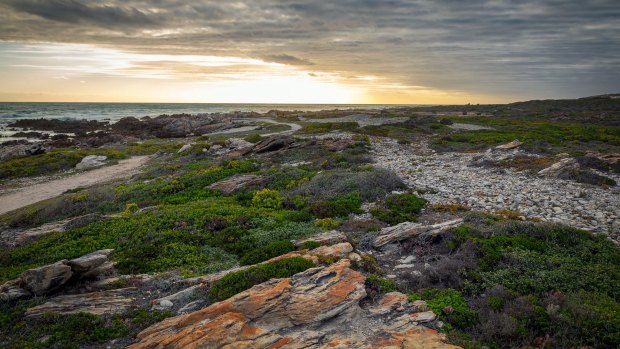
Sunset at Cape Agulhas.Credit: iStock
Hazy memories of school geography spring to life at South Africa's Cape Agulhas, the African continent's southern tip. Here the Indian and Atlantic oceans join forces to repel the cape's advance into the sea. Their attack is relentless; the wind shrieks as waves hurl themselves against the ruined battlements of the rocky shore.
We manage snap-frozen smiles standing in front of a stone cairn that marks the meeting of the oceans, right foot on the side labelled "Indian Ocean" and left on "Atlantic Ocean". The cairn should be a magnet for selfies. But on a wind-raked winter morning, we have the spot almost to ourselves.
Still, the elements at Cape Agulhas are kinder than at its opposite number, Norway's savage North Cape Plateau, which sits 307 metres above the Arctic Ocean. On a bone-chilling visit years ago, we were told a winter storm had ripped the original tourist centre off the top of the plateau never to be seen again. The replacement is built into the plateau, not on it.
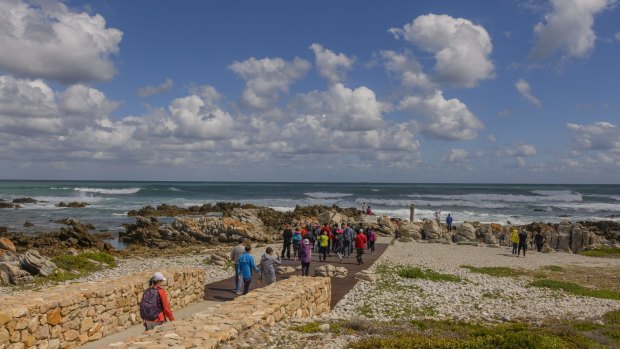
Visitors at Cape Agulhas, the southern-most tip of the African continent and the beginning of the dividing line between the Atlantic and Indian Oceans. Credit: iStock
We're driving east to west from Port Elizabeth to Cape Town along South Africa's scenic Garden Route. That's 750 kilometres not counting detours such as the previous night in the coastal resort of L'Agulhas, an hour south of the main highway.
An imposing lighthouse commands Cape Agulhas. Red and white against a deep blue sky, it should be hard to miss even on the darkest night. However, the nearby wreck of the Meisho Maru, rusting in the wild surf, tells a different story.
Wrecks outnumber even the wineries along South Africa's southern coast. So, who coined the optimistic-sounding "Good Hope"? We find the answer 220 kilometres later, on a Friday night in Cape Town's Dias Tavern.
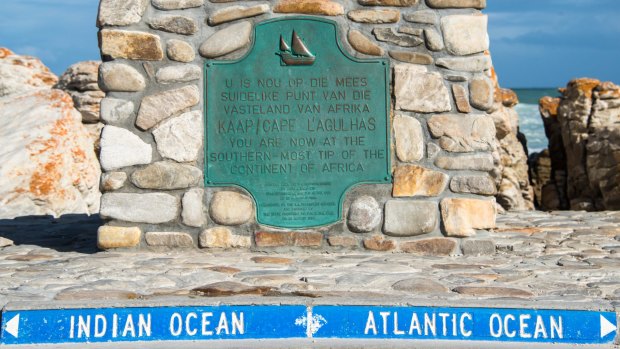
A sign at Cape Algulhas, the southern-most tip of South Africa.Credit: iStock
Waiting for our plates of tasty South African kingklip, calamari and chips, I idly peruse my placemat which celebrates the exploits of Portuguese navigator Bartolomeu Dias. In 1488, Dias was the first European to explore the Cape of Good Hope and live to tell the tale. The mat says Dias called it Cabo Tormentosa, Cape of Storms, a warning to ships that might follow him. However, Portugal's king, no doubt with an eye to future tourism, renamed it Cabo da Boa Esperanca, Cape of Good Hope.
Dias was lost at sea during another expedition around the Cape in 1500. (As the waves closed over his head, Dias could have been forgiven one last, "I told you so!")
The tavern is packed with maybe a hundred diners, and I'm the only one studying the placemats. Everyone else is fixed on the big TVs arrayed around the room, roaring support for the Cape Town-based Western Province rugby team as it outruns the Pumas (no, not Argentina's national side but a South African provincial outfit).
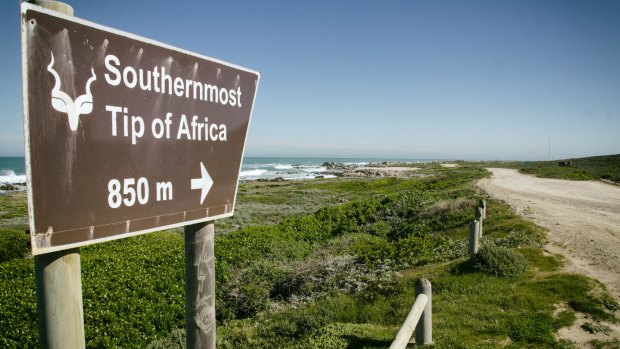
Signpst at Cape Agulhas, South Africa.Credit: dpellicola
Not that Western Province needs much encouragement – it's ahead 36-7 as we leave for the nearby Fugard Theatre complex, and a voyage of a different sort: a stage adaptation of Ernest Hemingway's novella The Old Man and The Sea.
One day there may be a successful theatrical version of Hemingway's tale of an old fisherman's lonely struggle to land a giant marlin and then defend it from voracious sharks. But this is not it. Too fussy and frenetic for my taste, the simple dignity of Hemingway's old man is lost at sea.
THE DETAILS
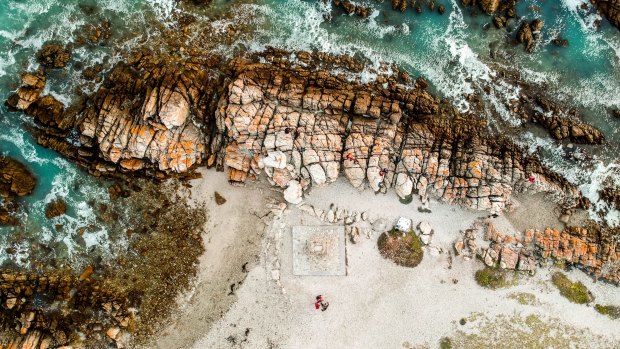
Aerial view of rocks and breaking waves at Cape Agulhas, South Africa's southern-most point. Credit: iStock
Greg Lenthen travelled at his own expense.
MORE
FLY
Qantas flies daily from Sydney to Johannesburg. Virgin Australia code shares with South African Airways (SAA) from the east coast to Perth and then direct to Johannesburg. See qantas.com; virginaustralia.com
SAA and British Airways both offer connections from Johannesburg to either Cape Town or Port Elizabeth. See flysaa.com; britishairways.com
Sign up for the Traveller Deals newsletter
Get exclusive travel deals delivered straight to your inbox. Sign up now.